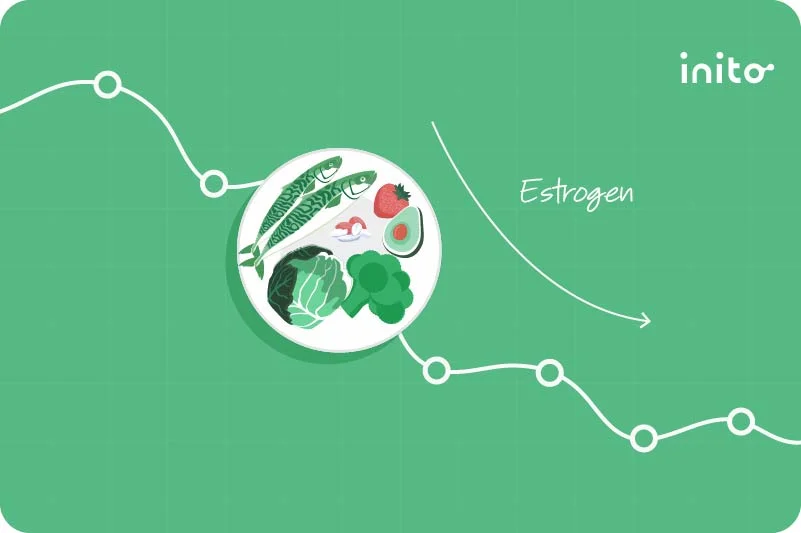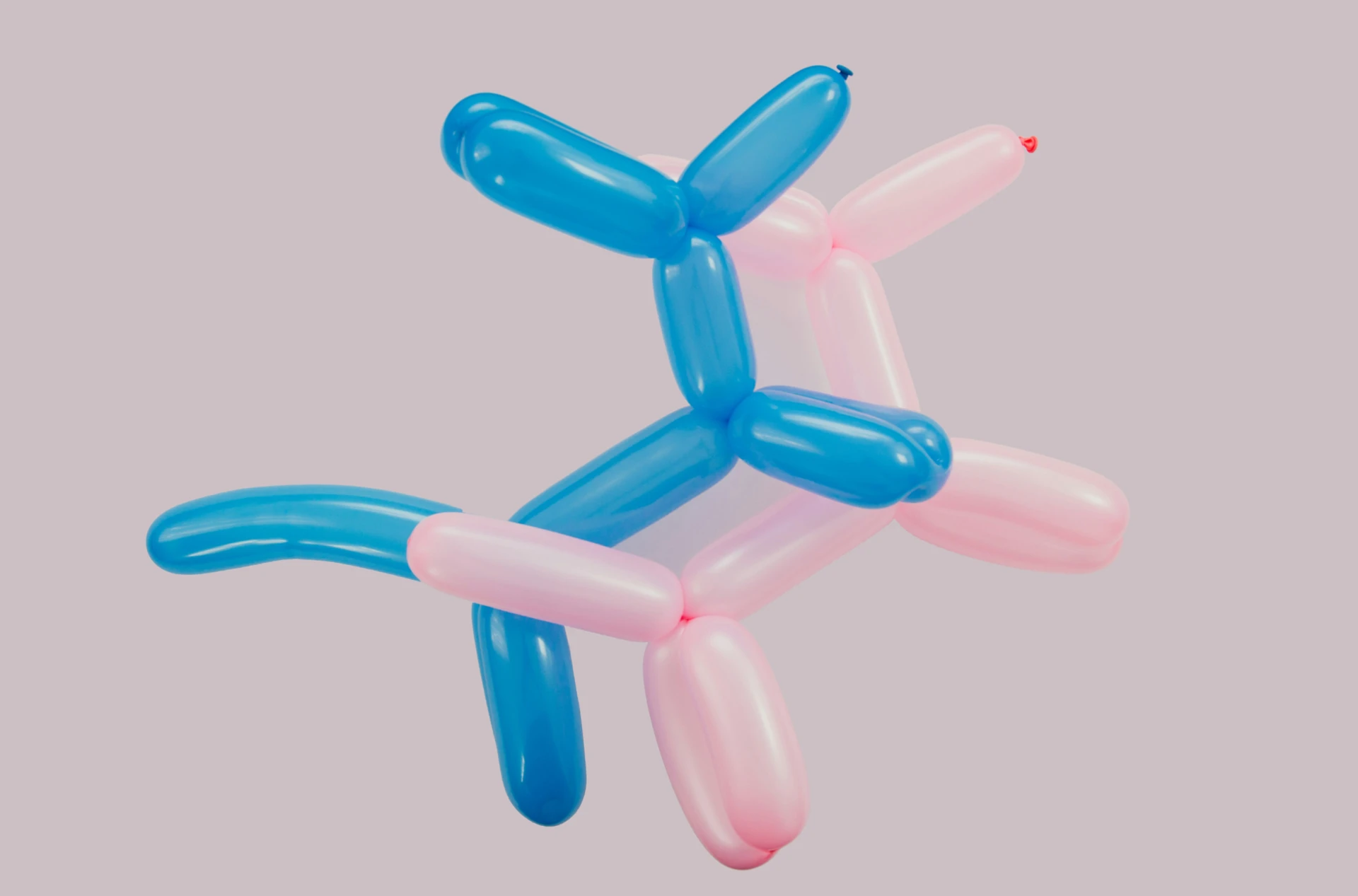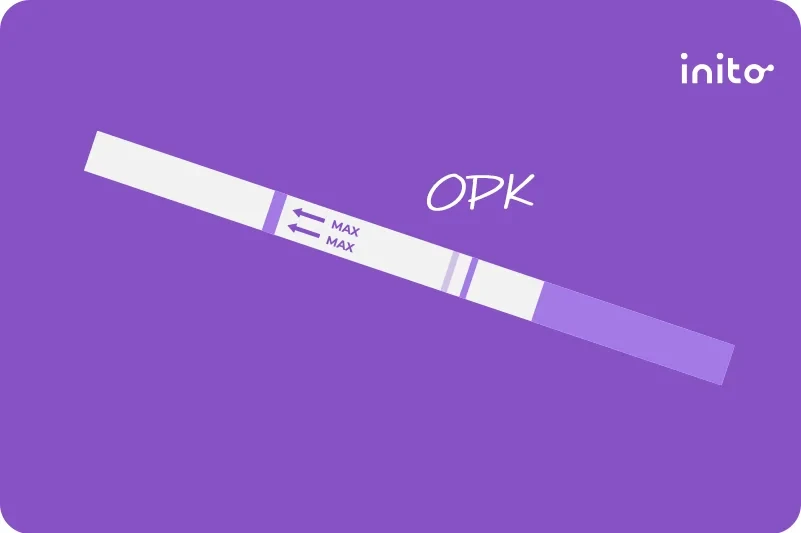Content table
You may have heard of estrogen dominance, but is it a real thing?
Unfortunately, yes. Some women suffer from having too much estrogen in their bodies. This leads them to experience symptoms of estrogen dominance that include low sex drive, irregular periods, mood changes, bloating, and more.
If this sounds like it could be you, don’t worry. There is a way to balance your estrogen to be in the sweet spot.
And changing what you eat is a part of that. Certain foods may be able to help with estrogen dominance.
You want to focus on eating more fiber, cruciferous vegetables, and anti-inflammatory foods. And you also want to cut back on alcohol, processed sugar, and processed meats.
It helps to make some lifestyle changes, too. This includes reducing stress, losing weight, and cutting out exposure to xenoestrogens.
Read on to learn more.
TL;DR
- Estrogen dominance is an imbalance in the body when estrogen levels are too high.
- Estrogen dominance can be caused by age, obesity, stress, alcohol, gut dysbiosis, hormonal birth control, and xenoestrogens.
- How do you lower estrogen naturally? Via diet, supplements, and lifestyle changes.
- Estrogen dominance diet changes include more fiber (i.e. cruciferous vegetables), plant-based foods, Mediterranean diet foods, probiotic-rich foods, and anti-inflammatory foods.
- Change your diet by cutting out processed meats, refined sugars, and other processed foods.
- Add supplements like omega-3 fatty acids, chasteberry, and milk thistle to help with estrogen dominance.
- Lifestyle shifts to help decrease estrogen include managing weight, reducing stress, and limiting exposure to xenoestrogens.
- The amount of time it takes to reverse estrogen dominance depends on what caused it in the first place. It also depends on how high your estrogen is.
- First, focus on the root cause. Then look at how to treat the underlying condition. Finally, ways you can shift to lead a more healthy lifestyle.
What is Estrogen Dominance?
Both estrogen and progesterone play important roles on their own. But their work together is equally as important.
These two key hormones collaborate to regulate your menstrual cycle and reproduction. Estrogen is all about growth, which stimulates cell division and tissue growth. Progesterone levels keep estrogen levels in check.
So, you can imagine that when they’re out of balance, your body suffers.
Estrogen dominance is one of the hormonal imbalances to look out for. It happens when there are higher levels of estrogen compared to progesterone.
Estrogen dominance can occur due to a couple of reasons:
- High levels of estrogen. There are increased circulating levels of estrogen (seen with obesity, birth control, and xenoestrogens).
- Reduced metabolism or excretion of estrogen. The body isn’t properly metabolizing estrogen (due to gut dysbiosis or excessive alcohol consumption), so it sticks around for longer.
- Progesterone deficiency. When progesterone levels are lower than expected (such as in chronic stress), the delicate estrogen-progesterone balance becomes off.
And, if left untreated, you increase your risk of breast cancer, Polycystic Ovary Syndrome (PCOS), endometriosis, and fibroids.
Learn more: Estrogen Dominance and How Does It Affect the Body?
How Can I Naturally Reverse Estrogen Dominance?
Diet changes
Estrogen breakdown has two main paths. One is the “good” 2-hydroxyestrone, which blocks harmful cell growth. The other is the “bad” 16-hydroxyestrone, which is linked to inflammation and other issues. So, keeping a balance favoring the “good” estrogen is key for your health. How do you get more of this good estrogen in your body?✅Try more plant-based foods and fiber-rich foods
Studies show that people with a mainly vegetarian diet have lower estrogen levels. That doesn’t mean you must completely give up meat if you love it. Just cut back on the meat portions and introduce more veggies. Adding in more fiber can also help reduce estrogen levels in your colon. That’s because fiber helps keep your bowel movements regular, which is estrogen’s #1 way out of your body. Try getting at least 25 grams of fiber per day and accompany that with plenty of water. Here are our favorite fiber-rich foods:- Cruciferous vegetables
- Flax seeds
- Raspberries
- Carrots
- Beets
- Avocados
- Apples
- Almonds
- Navy beans
- Chia seeds
✅Look to the Mediterranean diet
This diet has stood the test of time and still does. Researchers have discovered that the Mediterranean diet works to lower estrogen levels. Plus, the food tastes great. The Mediterranean diet focuses on fruits, vegetables, whole grains, olive oil, fatty fish, beans, nuts, and other fiber-rich foods. It aims to cut out processed foods, red meat, and sugar. With these eating habits, you’ll lower your circulating estrogen levels. Plus, you’ll also lower your risk of heart disease, metabolic syndrome, certain cancers, depression, diabetes, and more.✅Eat probiotic-rich foods
Your liver cannot do its job if you have a gut full of the bad bacteria. This condition is called gut dysbiosis and can cause your estrogen levels to go out of whack. The solution? Eating foods full of probiotics. These help to diversify your gut microbiome. Flush out the harmful bacteria and bring in the good to help with estrogen detox. Try these foods to help:- Coconut yogurt
- Kimchi
- Sauerkraut
- Kefir
✅Consume anti-inflammatory foods
High levels of “bad” estrogen can lead to inflammation. So to get rid of the bad and bring in more “good” estrogen, eat anti-inflammatory foods such as:- Ginger
- Turmeric
- Green tea
- Berries
- Nuts
- Olive oil
🚫Stay away from processed meat
You don’t have to stop eating meat. But make sure to get meat that is pasture-raised, grass-fed, grass-finished, and wild-caught. And reach for lean and white meat over red meat. Studies have shown that these animal products are more nutrient-rich. They also have fewer toxins (i.e. added hormones) that can affect your estrogen levels.🚫Minimize alcohol
As we talked about earlier, alcohol can put more stress on your liver. This affects your body’s ability to metabolize estrogen properly. Ideally, you’ll steer clear of alcohol but realistically you’ll minimize it.🚫Cut out refined sugars and processed foods
Refined sugars and processed foods are two pillars in the Western diet that may be wrecking your hormones. They’re also known to increase your risk of diseases such as breast cancer. Refined sugars and carbs can cause inflammation and blood sugar issues, which can mean hormone imbalance. And, studies have found that a diet packed with processed foods can lead to high estrogen levels.Adding supplements
Food is key to hormone balance, but it’s not the only tool in the toolbox. Another way is to take supplements to lower estrogen.Omega-3 fatty acids
Omega-3s are key to your body’s production of “good” estrogen and the flushing out of the bad estrogen. They contain lignans, which may help to slow down cancer growth. If you can’t get enough omega-3s through your diet (cold-water fish like salmon, chia seeds, and avocados), you can turn to a supplement.Chasteberry
This plant is lauded for its ability to raise progesterone levels. You can imagine how this is key when estrogen is dominating. Look to chasteberry to help restore your hormonal balance.Milk thistle
Milk thistle made our list because it has a flavonoid called silymarin. This flavonoid has proven to speed up estrogen metabolism, which is great if you have estrogen dominance.DIM
Researchers have found that DIM may boost estrogen metabolism, a.k.a. it helps with estrogen dominance. Note: Speak to your healthcare provider before adding any supplements to your routine. They may not be suitable for pregnant or breastfeeding women.Lifestyle shifts
Here are a few lifestyle shifts that can help you lower your estrogen levels:Weight management
Obesity can lead to excess estrogen. This means you need to keep a healthy weight. By decreasing the fat cells you have, you decrease estrogen levels in your body. On top of that, losing weight can reduce insulin resistance from metabolic syndrome. Insulin resistance can boost estrogen levels and can also cause a higher level of inflammatory mediators. This may lead to estrogen-sensitive issues like fibroids. That’s why regular exercise and supplements can help with estrogen dominance.Reduce stress
ICYMI – stress can be seriously problematic for your sex hormones. Stress = increased cortisol, which can lead to lower progesterone levels. This throws off the delicate balance between estrogen and progesterone. So, to help establish equilibrium, decrease stress. Simple enough, right? Here are some tips for reducing stress:- Sleep 7-9 hours per night
- Cut your screen time, especially at night
- Exercise regularly
- Meditate
- Do breathwork
- Spend time with loved ones
- Listen to music
Cut exposure to xenoestrogens
Canned foods, bottled water, sandwich bags, to-go containers, and more are packed with xenoestrogens. This chemical can cause estrogen levels to increase. One such chemical you may be familiar with is BPAs. BPA exposure is rampant. You’ll find this endocrine disruptor primarily in food and beverages. Instead, use glass containers, stainless steel, cast iron, and porcelain. Also, avoid canned foods as much as possible.How Long Does It Take To Reverse Estrogen Dominance?
There is no one-size-fits-all timeline for reversing estrogen dominance.
It all depends on the cause of your imbalance and how high your estrogen levels are.
Rather than worrying about how long it will take to fix, focus on these steps:
- Identifying the cause of the estrogen dominance
- Treating the underlying condition
- Making lifestyle changes for a healthier life

FAQs
Estrogen dominance is when estrogen levels are too high (compared to progesterone). And yes, men can be estrogen-dominant, too. It can happen thanks to aging, weight gain, stress, and even certain medications.
What estrogen dominance looks like for one woman may be different for the next.
But, there are some common symptoms of estrogen dominance to pay attention to:
- Low sex drive
- Abnormal periods
- Heavy periods (menorrhagia)
- Severe PMS symptoms
- Bloating
- Weight gain
- Fatigue
- Acne
- Low mood
- Anxiety
- Swollen or tender breasts
- Headaches
- Hair loss
- Sleep troubles
If you’re feeling any of the above, take an estrogen test to get a read on your levels.
Estrogen dominance treatment focuses on an estrogen-dominance diet plan which includes eating more cruciferous vegetables, fiber, whole foods, and anti-inflammatory foods while limiting your intake of alcohol, processed sugar, and processed meats.
Focus your attention on lifestyle changes such as managing your weight, reducing stress, and cutting your exposure to xenoestrogens like BPAs.
Was this article helpful?
- Menorrhagia | NIH
- The importance of estradiol for body weight regulation in women | NIH
- Profiling and Hormonal Therapy for Acne in Women | NIH
- Hormonal Effects on Hair Follicles | NIH
- The Role of Estrogen in Brain and Cognitive Aging | NIH
- Uterine fibroids – what’s new? | NIH
- Physiology, Cortisol | NIH
- Exploring the Biological Activity and Mechanism of Xenoestrogens and Phytoestrogens in Cancers: Emerging Methods and Concepts | NIH
- 2-hydroxyestrone: the ‘good’ estrogen | NIH
- Long-Term Whole Grain Wheat and Rye Intake Reflected by Adipose Tissue Alkylresorcinols and Breast Cancer: A Case-Cohort Study | NIH
- Estrogen levels in serum and urine of vegetarian and omnivore premenopausal women | NIH
- A traditional Mediterranean diet decreases endogenous estrogens in healthy postmenopausal women | NIH
- Estrogen-gut microbiome axis: Physiological and clinical implications | NIH
- Vitamins A, E and fatty acid composition of the eggs of caged hens and pastured hens | NIH
- A review of fatty acid profiles and antioxidant content in grass-fed and grain-fed beef | NIH
- Risk-Based Consumption Advice for Farmed Atlantic and Wild Pacific Salmon Contaminated with Dioxins and Dioxin-like Compounds | NIH
- Alcohol Consumption and Urinary Estrogens and Estrogen Metabolites in Premenopausal Women | NIH
- Dietary patterns, the Alternate Healthy Eating Index and plasma sex hormone concentrations in postmenopausal women | NIH
- Associations between dietary patterns and the risk of breast cancer: a systematic review and meta-analysis of observational studies | NIH
- The Natural Agonist of Estrogen Receptor β Silibinin Plays an Immunosuppressive Role Representing a Potential Therapeutic Tool in Rheumatoid Arthritis | NIH
- Hormonal therapy in female pattern hair loss | NIH
- 3,3′-Diindolylmethane Modulates Estrogen Metabolism in Patients with Thyroid Proliferative Disease: A Pilot Study | NIH












